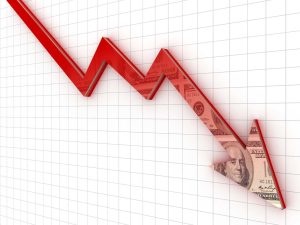Stocks have rallied, in particularly the out-of-favor small caps and speculative names, after data showing U.S. consumer and then producer prices coming in below economist estimates, as the unemployment rate has climbed a half-point from its lowest level.
Henry Allen, a strategist at Deutsche Bank, cautions that it’s the seventh time this cycle that markets have attempted to make a dovish pivot. The other six, obviously, have been wrong.
A dovish pivot describes a change in interest-rate expectations in favor of less aggressive monetary policy.
Here’s Allen’s chronology:
November 2021: The omicron variant of SARS-CoV-2 appears. That leads traders to think COVID cases may again overwhelm health services, and ensuing economic pain, which in turn would mean that central banks would not have to hike rates.
Late February/early March 2022: Russia invades Ukraine. The immediate impact is that the Fed kicks off its rate-hike campaign with a 25-basis-point rather than a 50-basis-point increase. In retrospect, the invasion exacerbated inflationary problems while not denting economic activity much at all.
May 2022: Investors begin to get worried about multiple growth worries: China’s draconian zero-COVID strategy, the war in Ukraine and the fact the Fed rate-hike cycle has started.
July 2022: Fears of an imminent global recession as well as a decline in the CPI lead to speculation of a dovish pivot, including from Fed Chair Jerome Powell, who says “it likely will become appropriate to slow the pace of increases.” He pivots back to the hawkish side at the Jackson Hole symposium in late August.
Late September/early October 2022: The financial crisis in the U.K., sparked by a budget from former Prime Minister Liz Truss and exacerbated by a pension crisis, leads markets to price in fewer rate cuts for 2023.
March 2023: The banking turmoil stemming from the collapse of Silicon Valley Bank leads markets to believe the Fed may be done hiking rates.
Here that is in chart form, using the yield on the 2-year
BX:TMUBMUSD02Y
and 10-year
BX:TMUBMUSD10Y
Treasurys.
“Clearly it’s possible that this time could be different, and the rise in unemployment and the fall in inflation is putting us closer to a position where the Fed have begun to cut rates in previous cycles. But 2023 has shown how expectations for cuts have been repeatedly pushed into the future,” says Allen.
Market Extra: Stock-market investors are convinced the Fed is finished with rate hikes. Why it isn’t a done deal.
Market Pulse: Traders now expect Fed could start cutting rates as soon as March
Read the full article here















